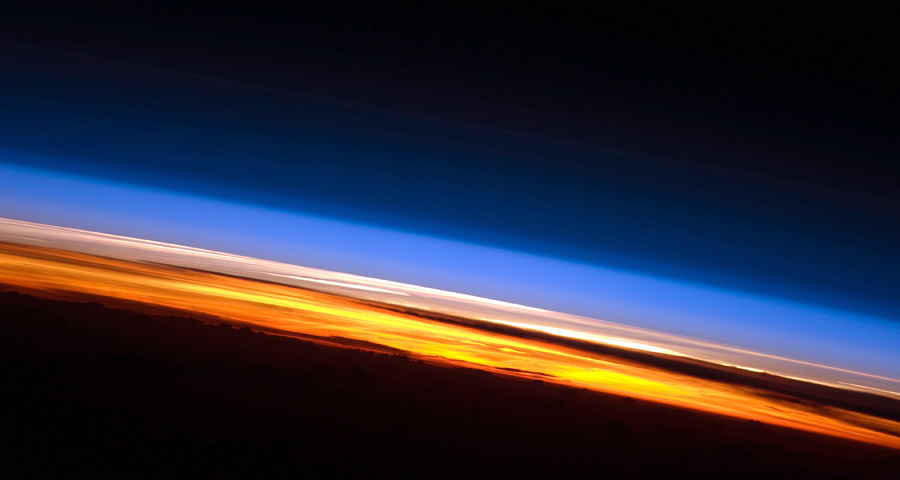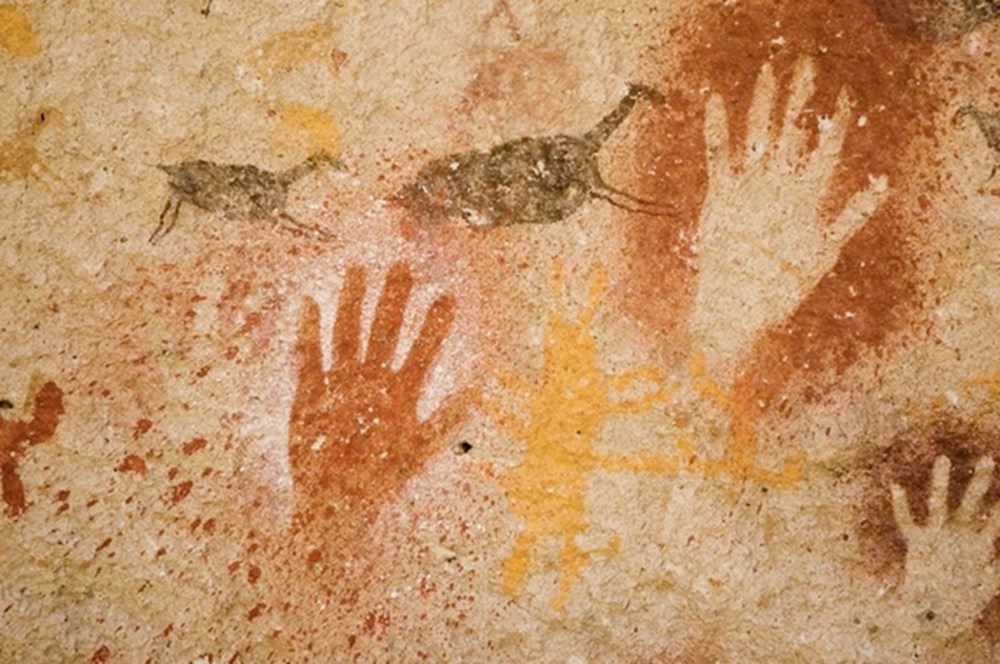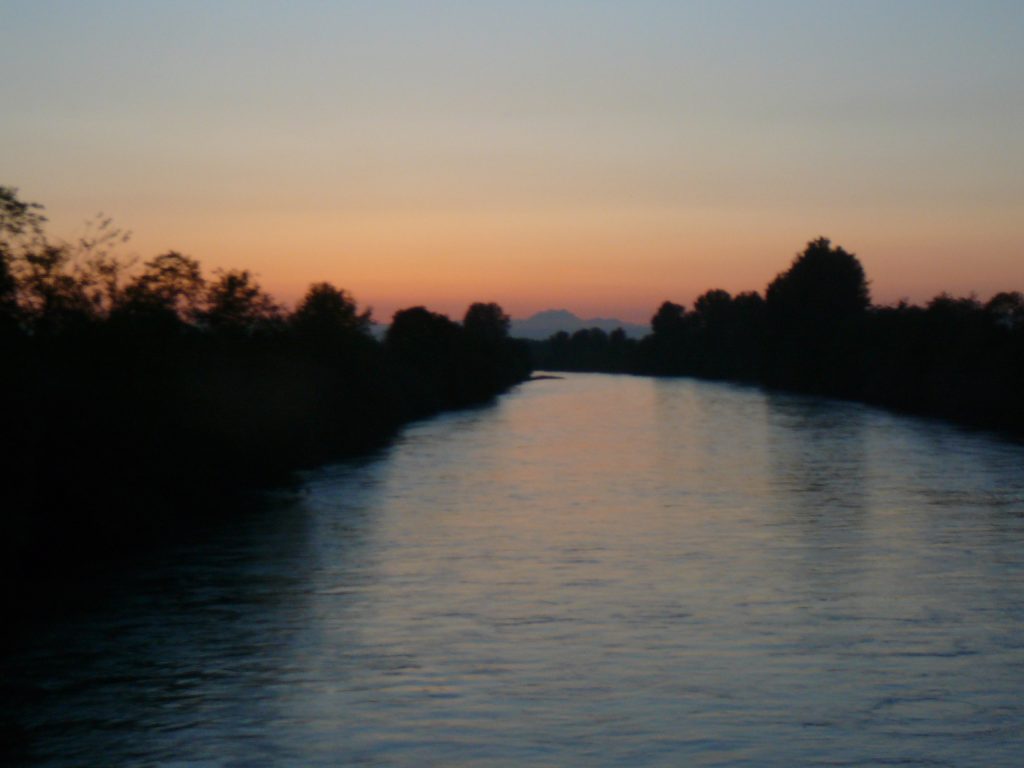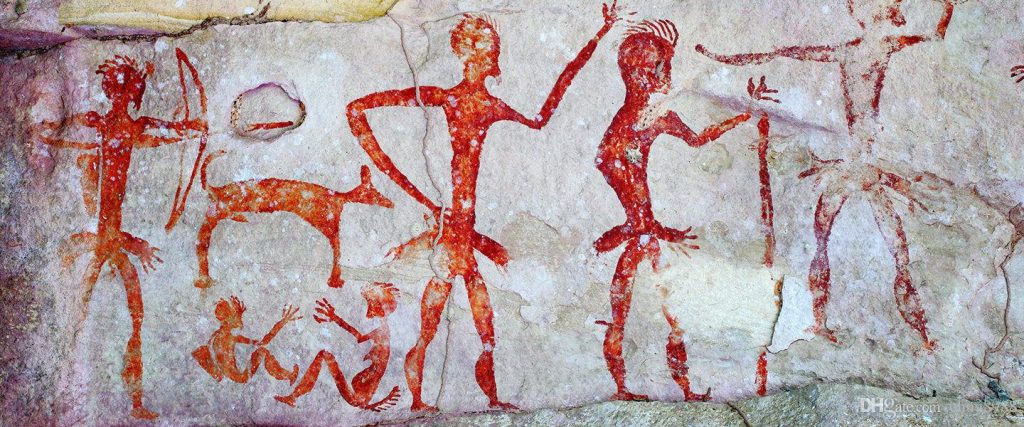The Wonder of It All
Let us consider Earth and the community of planets as seeds broadcast into a field – in this case, a solar field. Just as plant seeds can find themselves in locations that are too dry or too hot or too cold for sprouting, so most of the planets in the solar field landed in conditions unfavorable for growth. Only Earth was in a promising situation for germination.
The Earth-seed, our living planet, began to blossom.
The Four Elements
Many cultures throughout history have viewed the world as composed of four basic elements: earth (land), water, air and fire. In the West, in the 4th century BCE, Aristotle adopted and formalized this conception of four primary elements into a coherent system.
Aristotle interpreted our world as comprised of concentric spheres: earth (land) at the center, surrounded by a sphere of water; water, surrounded by a sphere of air; and air, surrounded by a sphere of fire. This was the prevailing worldview throughout the medieval era, taught at universities beginning in the 13th century. (No educated lay person or cleric believed the earth was flat.)
By the 14th century it was obvious modifications were necessary, since it was apparent the sphere of water did not entirely submerge the sphere of earth. Scholars suggested there was dry land because the earth sphere floated like an apple in the water sphere, or that God miraculously held back the oceans. In the 15th century, Columbus, venturing west, had the impression he was sailing uphill. This traditional view is reflected in the term, ‘the high seas.’
With the voyages of Portuguese and Spanish in the 15th and 16th centuries and the discovery of new lands and seas, the old Aristotelian scheme of separate spheres was overturned. Earth was understood now as a single entity of combined land and water, a ‘terraqueous globe.’
Earth and Water
We know that Earth, like other planets of the early solar system, formed from the accumulation of material surrounding our Sun. And a prominent feature of Earth, distinguishing our planet from other members of the planetary community, is the presence of oceans, covering seventy percent of Earth’s surface.
Whence comes the water of our watery home?
For decades scientists thought water was delivered to Earth through the impact of stray asteroids and comets, with their cargoes of rock and ice. However, careful inspection revealed the water composition of those visitors did not entirely match the chemical make-up of Earth’s water. The origin of Earth’s vast oceans remained a mystery.
Until 2020, when researchers examined rare 4.6 billion-year-old meteorites, rocks from the inner solar system, from which Earth was formed. They discovered the water in those meteorites matched exactly the composition of Earth’s water. Earth’s very rocks contained its oceans! (It is estimated there are three or four oceans worth of water residing within Earth’s mantle.) The emergence of water constitutes the first flowering of the living Earth.

How is water released from a young molten Earth? This much is known: Earth forms 4.5 billion years ago, the soon-to-be Moon impacts the planet 4.4 billion years ago, and there is evidence of oceans 4.3 billion years ago. Our Moon is midwife, breaking Earth’s waters and fostering the birth of living beings. Four billion years ago Earth brings forth the gift of sentience.
Sentience and Air
Sentience is life’s capacity for sensing, feeling, responding. This is a stunning dimension of Earth’s development, profoundly transforming the planet. Sentience evolves into myriad forms of single-celled and multicellular life. Of life’s many consequences, the most far-reaching is the arising of photosynthesizing organisms. Through these single-celled organisms and, later, plant life, a pervasive new entity, an original atmosphere, is created: Air.
Oxygen-steeped Air provides a protective ozone layer blanketing the planet, allowing plant and animal life on land to develop and flourish. An ocean of air becomes the medium in which surface life expands and complexifies, enriching Earth with the bountiful sensitivities of life.
Fire
Four hundred million years ago, as life forms colonize land, and fernlike plants and trees populate the continents, Earth’s atmosphere brings forth a prodigious new energy. Air conjures Fire.
Consider: we require an entire atmosphere to light a single match. Fire cannot exist on the Sun or any other planet in our solar system. Fire reveals itself as an elemental presence through the marvel of an oxygen-rich atmosphere. Fire is an evolved power of Earth.

We can recapitulate the unfolding gifts of our living planet:
Earth releases Water
Water births Sentience
Sentience creates Air
Air unveils Fire.
This is the marvelous flowering of Earth. And there is more.
For eons animals have known what to do when encountering fire – they run. There is safety in this strategy, a reliable response to a potent and dangerous presence. And so, it is astonishing that a million and a half years ago, a hominin called homo erectus confronted fire and did not run. Instead, this being was fascinated: fascinated with fire’s power, and also its possibilities.
In that early human, Fire evokes Imagination.
Imagination
With fire in hand, homo erectus is the earliest human ancestor to venture out of Africa en masse, traveling into Western Europe, the Near East, India, Indonesia and China. The imaginative use of fire shapes human culture. In providing warmth and protection from predators, fire becomes the first human domestication. Campfires promote cooking, expanding the range of digestible foods, while extending waking hours for increased social bonding.
Fire thoroughly integrates into human life, becoming a biological inheritance. Significantly, homo erectus is the first hominin captivated by pigment: red ochre, the color of fire.

Imagination grows in early hominins and peaks among cave painting hunter-gatherer groups tens of thousands of years ago. In the deepest and darkest of settings, in womblike enclosures, a world of dynamic animals is re-presented in pigment and firelight. A vision once held internally is birthed externally on cave walls. The revelation is deeply stirring, momentous and numinous. Here is exhibited a full capacity to imagine worlds: humans manifest the dreams dreamed by Earth.
The Place of Humanity
The imaginative power of humanity belongs to Earth as completely as ocean or sky. Just as the planet’s life is expressed in rhythms of sleeping and waking, or inhaling and exhaling, a dynamic rhythm is displayed in cultural life as well. The world-imagining of humans reveals a vital pulse of separation/expansion and connection/enhancement.
Upon domesticating fire, homo erectus departs Africa, dispersing into new terrains. This movement becomes the template for succeeding groups of hominins: separating from the homeland and expanding, ever expanding, until the entire globe is inhabited. Separation and expansion reach a zenith.
A new world-imagining ensues. Fifty thousand years ago, perpetual human wanderers commence merging with their landscapes. Settled and nomadic groups become indigenous, in reciprocal partnership with the shared environment of plant and animal, river and mountain, forest and tundra. A relational intuitive bonding ushers forth a sustainable nourishing culture. Connection and enhancement permeate indigenous living.
Gradually, eight thousand years ago, a unique system of crop-raising, class structure and economic inequality forms. Civilization, a configuration of humanity both highly inventive and exploitative, arises. The economic and martial power of civilization becomes a juggernaut, enveloping the world, accompanied by the destruction of much animal, plant and human life. A divorce from the ecology of the planet, for narrow human ends, results in the despoliation of air, soil, and water. Separation and expansion reach a zenith.
A Planetary Culture
We have gained access to Earth’s physical powers without understanding and respecting that these are sacred gifts.
As the decline of our global civilization begins, Earth elicits a new imagining, one that embodies our relation to the entirety of Earth’s being: it’s human and other-than-human dwellers, as well as its ecosystems. We are inspired to be co-creators and co-nurturers, in a mutually enhancing partnership with the planet.
Our task is to become indigenous to the whole of Earth, in the myriad ways that are possible. We are called to develop a planetary awareness, bringing all the gifts of humanity as offerings to Earth’s greater well-being.
This is the maturing of Imagination, and a fulfillment of Earth’s wondrous unfolding.






